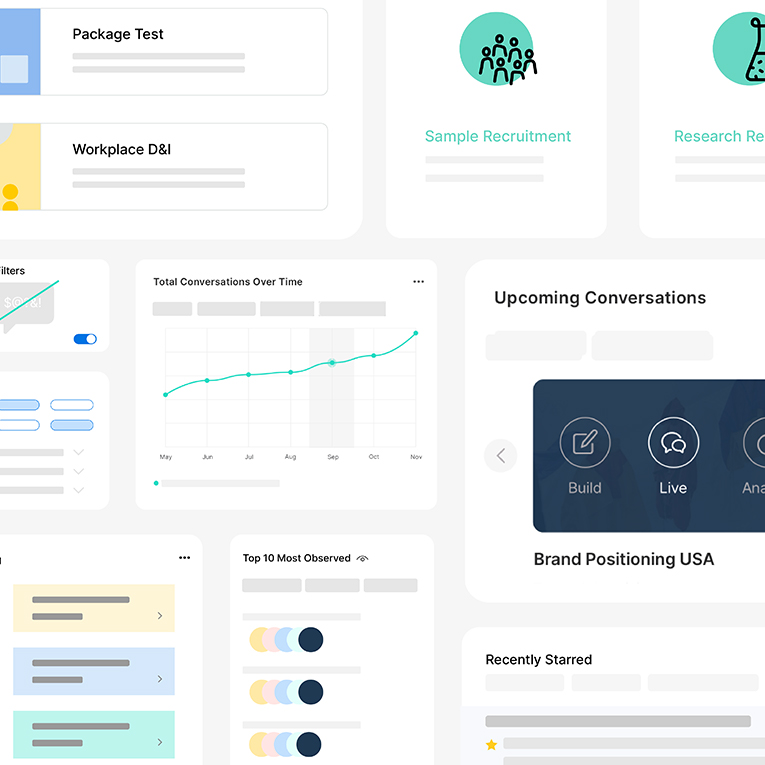.webp)
Trends
How to Calculate Your Sample Size Using a Sample Size Formula

.png)

.png)
Read More

.png)
.png)
.png)
Maria Noesi
November 25, 2021
Remesher
.webp)
Trends
How to Calculate Your Sample Size Using a Sample Size Formula

.png)

.png)
Read More

.png)
.png)
.png)
November 25, 2021
Remesher
.webp)
Trends
How to Calculate Your Sample Size Using a Sample Size Formula

.png)

.png)
Read More

.png)
.png)
.png)
November 25, 2021
Remesher
.webp)
Trends
How to Calculate Your Sample Size Using a Sample Size Formula

.png)

.png)
Read More

.png)
.png)
.png)
November 25, 2021
Remesher
.webp)
Trends
How to Calculate Your Sample Size Using a Sample Size Formula

.png)

.png)
Read More

.png)
.png)
.png)
November 25, 2021
Remesher
.webp)
Trends
How to Calculate Your Sample Size Using a Sample Size Formula

.png)

.png)
Read More

.png)
.png)
.png)
November 25, 2021
Remesher
Representative Intelligence: The Next Phase of Human Communication
Throughout history, people have always sought a way to better understand a group of people. Major progress has been made with mail, the internet, and now AI market research tools. Better understanding leads to happier people, and a better bottom line- this next phase is Representative Intelligence.

This post was originally published on Greenbook's blog.
The rate of progress is ever increasing, and with it, so is our need to understand information quickly to make data-driven decisions. To better illustrate this, let’s step back and take a quick look at the history of what it takes to understand a group of people.
The year was 53 BC. Julius Caesar was ruling the vast Roman Empire and wanted to better understand the sentiment of his people to better deploy his limited resources- what were their needs or fears, was revolution brewing, were there pending food shortages? He called together his legions and tasked them to speak to 1,000 various inhabitants of the empire and return with an understanding of how the empire felt. Off they went on horseback, traveling several days or weeks, interviewing townspeople for a few days, and then riding on until they reached the next town. The whole process of questioning, recording, traveling, and then reviewing the thoughts of 1,000 people took approximately 4 months. The information he learned was instrumental in managing his Empire.
Flash forward a great deal to 1775 when Benjamin Franklin was appointed the first postmaster general and US mail becomes the fastest way of delivering communications over long distances. With mail, 1,000 people could now be questioned and understood in about 1.5 months.
Take a small hop forward to 1849, and the telephone is the hottest new innovation- it now becomes possible to interview, record, and understand 1,000 people in under 1 month. A little over a century later in 1999, the internet emerges- reducing the time to interview and gain insight of 1,000 people to under a week. Then, a decade and a half later, we see automation emerge in market research tools with companies such as ZappiStore. It now becomes possible to interview, record, analyze, and understand 1,000 people in a matter of days. However, these leaps in the time needed to understand people are almost universally quantitative in nature not qualitative, ultimately sacrificing a richer understanding of each individual to meet the increasing demands for faster results. As we move forward, we’re taking smaller and smaller leaps of time, with larger and larger impacts than we’ve ever seen before. Technological and social transformations would happen over centuries; now we see rapid changes in just years. The rate of progress is increasing and we are progressing forward with it – the way we communicate, interact, and understand.
What’s the fastest way you can understand someone? You have a conversation with them. Since 2012, the next stage in understanding groups of people has emerged and this time, not only is it fast, it’s also rich, qualitative data. So now what’s the fastest way you can understand a group? Have a conversation with them – all at once. While speaking with 1,000 people all at once sounds like pure chaos, artificial intelligence is actually making this a reality, a reality that can be achieved through Representative Intelligence.
Representative Intelligence is an intelligence- something you interact with and it has the ability to interact with you – that effectively represents the thoughts, beliefs, and opinions of a specific group of people. Representative Intelligence is not the act of AI replacing humans, but AI facilitating humans to speak “as one”. The insights that are gleaned from a conversation with Representative Intelligence lets you understand the opinions and beliefs that best represent the group as a whole. In a sense, you separate the idea from the individual, and it’s the ideas that resonate the most with all individuals in the group that rise to the top, ultimately creating the shared “voice”, or Representative Intelligence.
The way you can use Representative Intelligence today is through Remesh which allows you to communicate with a large group of people all online and engaged at once. It works by having the individuals in the group enter a response to a single question simultaneously, with machine learning and natural language processing running in the background to understand, analyze, and segment participants responses as they come in. In addition, the participants engage in a basic voting exercise, selecting the responses they agree with most, allowing the algorithm to better understand how each individual in the group thinks. In a matter of minutes, the responses are ranked by how much individuals agreed with them, ultimately leaving you with the response that best represents the group.
With Representative Intelligence, the time to insight is a matter of minutes. Basically, the time it takes to understand a group is the same as the time it would take to understand one person. The speed at which this takes place is crucial for understanding your audience – the longer it takes to understand people, the less information you truly gather. Everything changes quickly – technology, opinions, social norms- to be able to understand a group with the ease of speaking to a single person means you understand the sentiment of a group now- not what they thought a week, month, or year ago. In addition, when carrying out a live conversation, surprising answers may arise, and the fluidity of Representative Intelligence would allow you to dig deeper, and change the path of a conversation- something you can easily do in a one-on-one conversation but would be impossible through traditional mass communication and surveys. In this fast-paced, interconnected world, the ability to be in-tune with your audience – customers, employees, constituents, citizens- is vital to a healthy, more understanding world.
Today, we see that much of the data collected on groups of people for marketing purposes is passive. This is the data that is based on the actions people take, such as clicks, purchases, and visits, rather than data gleaned from actually engaging with them. Representative Intelligence is a form of active data- each individual is an engaged participant, contributing their ideas and opinions. Technology has given us the opportunity to “understand” our customers and audiences without ever engaging them. But is this the way to build an interconnected, understanding future? Perhaps we cannot base the aspirations and motivations of a person off of the actions we’ve measured. People are not made of a series of clicks, purchases and website visits. We’re missing their experiences, their relationships, their passions, their story. And we’ll never know if we don’t ask. Maybe it’s time we have a conversation with them. All of them.
Want to learn more about how tech's influence on product development and marketing cycles?
{{cta('c225e9b1-3108-4e5f-a488-107d17257f57','justifycenter')}}
Stay up-to date.
Stay ahead of the curve. Get it all. Or get what suits you. Our 101 material is great if you’re used to working with an agency. Are you a seasoned pro? Sign up to receive just our advanced materials.






